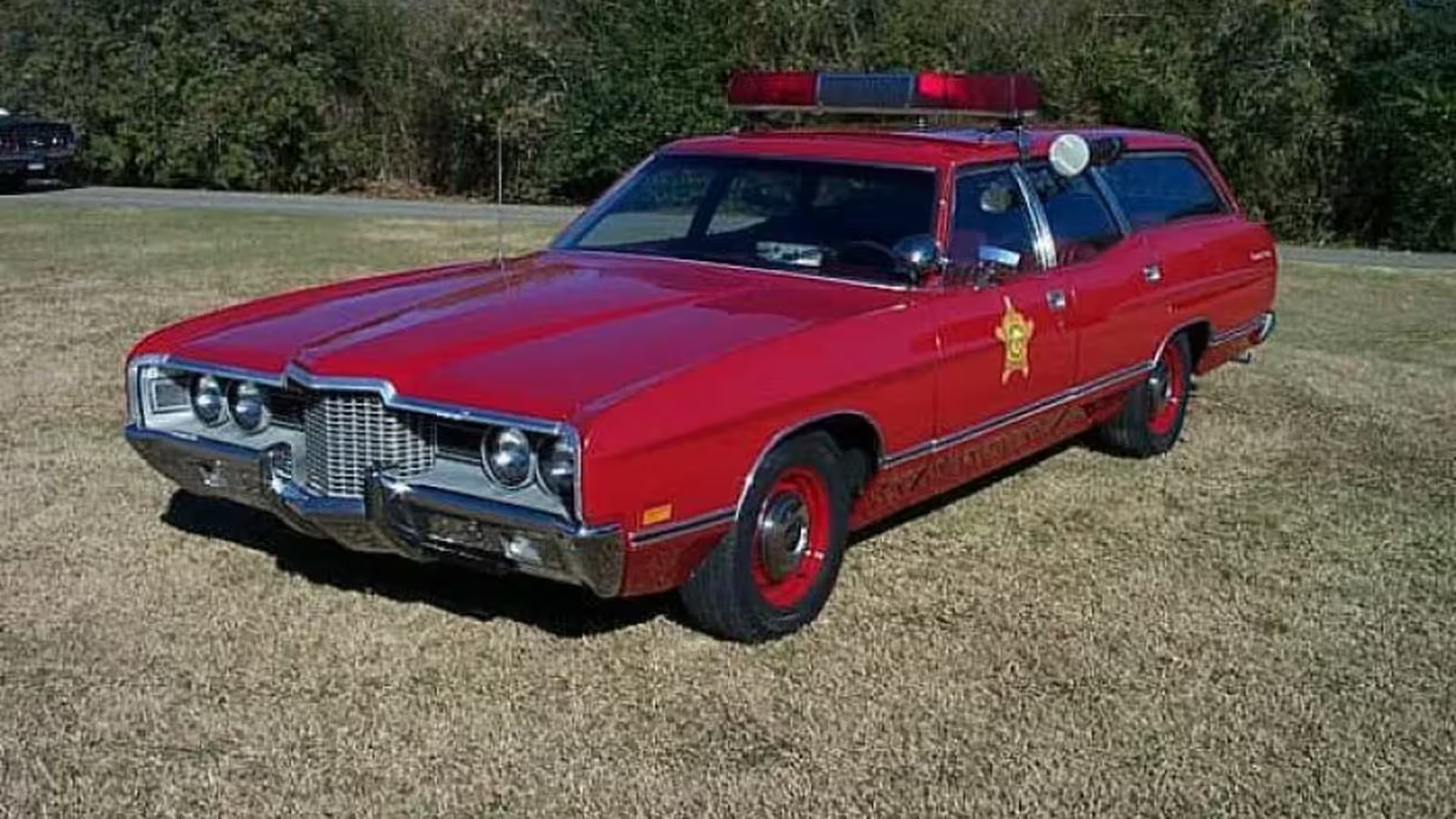7 Minutes
The Iconic Era of American Steel: Birth of the Galaxie Legend
Few vehicles capture the spirit of classic American automotive engineering quite like the 1971 Ford Galaxie 500 429 Police Interceptor Wagon. Emerging at a time when the highways were ruled by big V8 engines, full-frame construction, and genuine hubcaps, the Galaxie nameplate became synonymous with power, authority, and the unbridled optimism of the postwar United States.
Launched in 1959 amidst the excitement of the Space Race, Ford’s Galaxie badge was more than just a model name—it was a symbol of the era’s adventurous drive, innovation, and boundless ambition. The Galaxie’s sweeping lines, expansive interiors, and robust mechanicals made it a staple for families, businesses, and police departments alike across the nation.
The Challenging 1970s: Muscle Car Culture Meets Regulation
By the early 1970s, seismic shifts were underway in the American automotive landscape. Stricter emissions regulations, rising insurance premiums, and shifting consumer priorities began to tone down the raw, unfiltered horsepower that had made Detroit famous. Yet, in the midst of these changes, Ford unleashed a truly extraordinary machine: the 1971 Galaxie 500 Country Sedan—equipped not with faux wood trim, but with a fire-breathing 429 cubic-inch Police Interceptor (PI) V8.
This was no ordinary wagon. Conceived as a fleet-special powerhouse, the 429 Police Interceptor edition was built to outrun even the most nimble muscle coupes. It wore the familiar Galaxie styling with a new purpose—serving as a badge of dominance on America's highways and byways.
Not Your Average Grocery Getter: Law Enforcement's Secret Weapon
What set the 1971 Galaxie 500 429 PI Wagon apart was its ruthless efficiency as a law enforcement vehicle. While most station wagons of the era were destined for family errands, this beast was designed for pursuit—capable of siren-blaring speed runs that would leave contemporary muscle cars scrambling to keep up.
According to accounts from former Louisiana State Troopers, the 1971 Ford equipped with the 429 PI was arguably the finest police cruiser of its time. Armed with innovative patrol technology like the Visual Average Speed Computer and Recorder (VASCAR), officers managed to clock the wagon at an astonishing 140 mph. Achieving such velocities with a vehicle of this heft and boxy aerodynamic profile was a feat only possible with pure American big-block muscle.
Engineering Marvel: 429 Police Interceptor V8 Specifications
Powering the legend was Ford’s formidable 429 Police Interceptor V8—a motor distinct from the ThunderJet and Cobra Jet offered in civilian Galaxies. Crafted specifically for police and high-speed pursuit applications, the 429 PI packed approximately 370 horsepower and more than 450 lb-ft of torque.
Key features included forged pistons, a high-lift camshaft, a heavy-duty 600 CFM Autolite carburetor, a strengthened bottom end, and oversized cooling components to endure grueling law enforcement duty cycles. This robust engine was mated to the bulletproof C6 Select-Shift Cruise-O-Matic, a cast-iron automatic transmission renowned for its durability under extreme use.
The standard 3.00:1 rear axle ratio could be upgraded by fleet order to a limited-slip 3.25 or 3.50 for enhanced acceleration and traction, further transforming the wagon into a straight-line missile—the perfect tool for the midnight chase.
A Unique Custom Build: The Dr. Jones Wagon
One of the most intriguing examples of the 429 PI Galaxie originated with Dr. S.J. Jones, the coroner for Vernon Parish, Louisiana. Eschewing typical civilian specification, Dr. Jones special-ordered a Candy Apple Red Country Sedan through a Dallas-Fort Worth dealer in late 1970. His configuration included the heavy-duty police package, full red interior, and every performance enhancement Ford could offer at the time.
Delivering his Christmas Eve purchase back to Louisiana, Dr. Jones deployed the wagon in his coroner duties—notably transporting himself, but never bodies, as legend has it. His fastidious maintenance kept the vehicle in near-pristine condition throughout its short but meaningful service life.
The Resting Giant: Preservation and Rediscovery
After a financial dispute with his parish employers, Dr. Jones parked the wagon in his home garage, preserving it in virtually original condition. He continued to service the car, changing oil even while it sat idle, a white tape on the inner fender chronicling its maintenance history.
By 1982, the Galaxie had accumulated a mere 42,000 miles—an astonishing figure for a period police vehicle that was, typically, driven hard and retired early. The rarity of surviving 429 PI wagons makes such examples the ultimate collector’s find.
The Collector’s Dream: Changing Hands and a New Life
Deputy Dwayne Larriviere, an avid police car aficionado, learned of the unique station wagon from Dr. Jones and spent two decades persistently—but respectfully—attempting to purchase it. Only upon the doctor’s passing around 2003 did the wagon surface for sale, emerging from storage and quickly becoming part of Dwayne’s personal collection for $1,300.
Further research via Marti Auto Works revealed that only seven other Police Interceptor wagons were built to the same specification, affirming the car’s extreme rarity. Rather than cannibalize its parts for a police sedan, Dwayne preserved the wagon’s originality, eventually passing it to a fellow officer for restoration.
Restoration and Show Circuit Legacy
Subsequent restoration efforts targeted only the necessary cosmetic and mechanical issues: resprayed hood and upper fenders, a rebuilt engine, and the preservation of the original interior. Enhancements included era-correct emergency equipment—a Twinsonic clear-lens lightbar, radar unit, functional siren, and removable police insignias—cementing its status as a rolling artifact of American public service history.
The wagon adorned parade routes, car shows, and classic police vehicle gatherings, earning respect and admiration from enthusiasts and historians alike.
Legendary Market Status and Modern Rarity
When it appeared on auction platforms like Bring a Trailer in 2018, the red-on-red, fully equipped 1971 Galaxie 500 PI wagon quickly achieved legendary status among Ford collectors. Its unique combination of low mileage, unrestored authenticity, and storied public service history makes it a true unicorn in the muscle wagon universe.
Where most 1970s wagons faded into obscurity or were lost to rust, this Galaxie was saved not only by diligent care but also by the quirks and passions of its remarkable owners.
Comparing the Competition: Performance and Positioning
In the world of classic American wagons, few could match the Galaxie 429 PI’s synthesis of brute power, durability, and police pedigree. While rivals like the Chevrolet Kingswood and Plymouth Custom Suburban offered respectable performance, neither boasted an engine as fearsome as Ford’s 429 PI nor a backstory as rich.
The Galaxie’s limited-build nature and record-setting top speed put it in a league of its own. Even the performance-oriented muscle cars of the time—Mustangs, Camaros, Chargers—rarely combined such practicality with downright outrageous speed, making the police wagon a memorable outlier that blurred the lines between workhorse and street fighter.
Legacy and Lasting Influence
Ultimately, the Galaxie name was retired after 1974, bowing out as American automakers shifted toward smaller, more efficient, and less flamboyant vehicles. The Country Sedan and Police Interceptor wagons quietly faded from dealership lots, leaving behind only legends and a handful of survivors to tell their story.
This particular 1971 Galaxie 500 429 PI Wagon stands as more than just a rare collectible; it’s a testament to a time when automakers built vehicles with unrestrained vision and individuality. It embodies an era when wagons could outrun coupes, when law enforcement drove real steel, and when horsepower was both a badge of honor and a tool of the trade.
Today, this survivor remains a rolling time capsule—unapologetically bold, arrestingly powerful, and, above all, a piece of living history. For enthusiasts and collectors, it’s not just the car’s badge or specification that commands attention: it’s the narrative of innovation, utility, and American grit that truly defines its enduring appeal.
Source: autoevolution



Comments